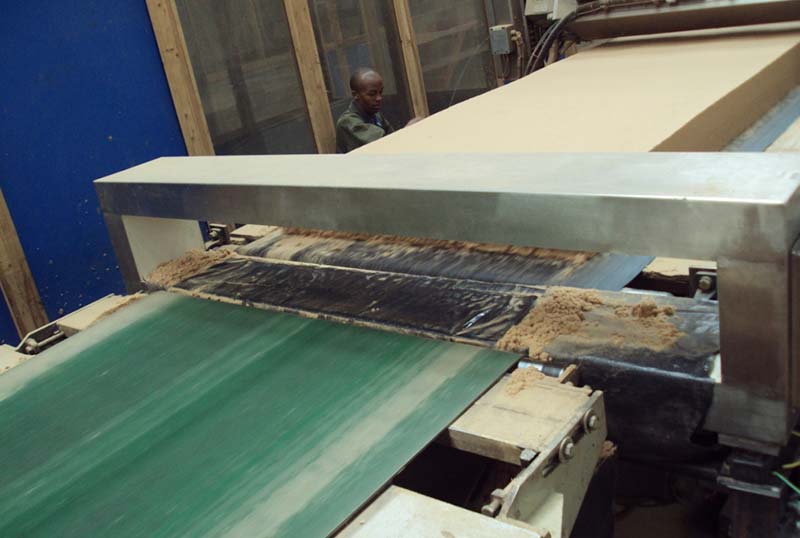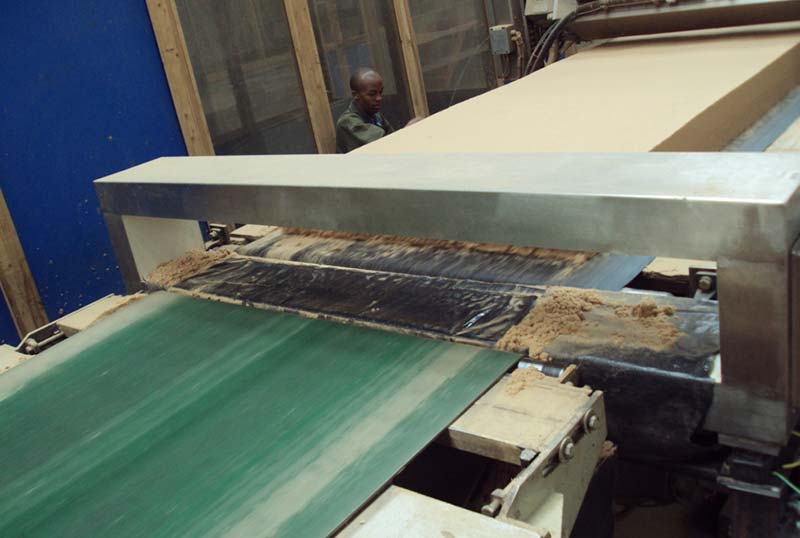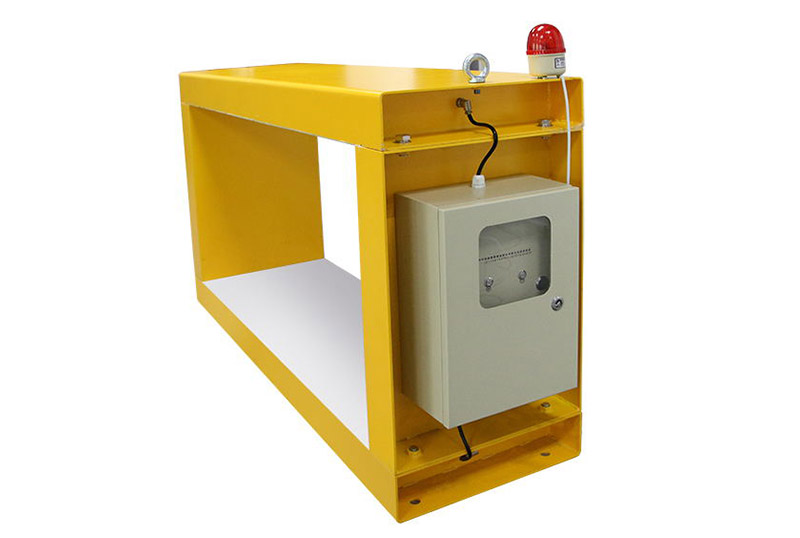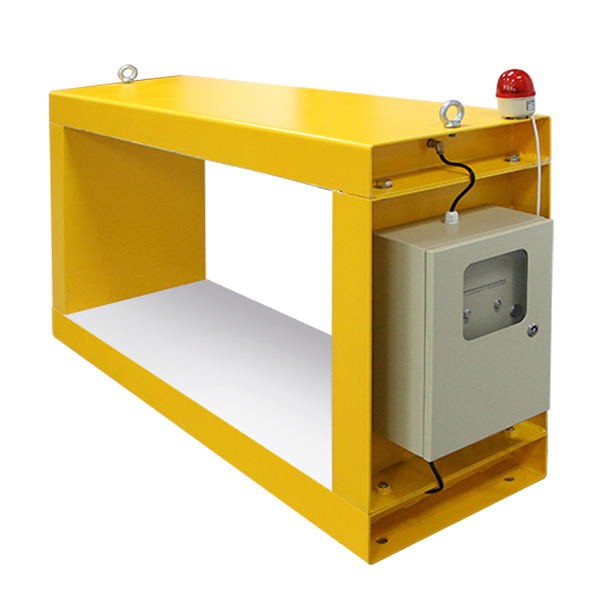Wood Industry
While metal detectors are more commonly associated with industries such as food and pharmaceuticals, they can also play a crucial role in the wood industry. Detecting and removing metal contaminants from wood products is essential to ensure the quality of the final output and to prevent damage to processing equipment. In the wood industry, both handheld and conveyor metal detectors can be employed at different stages of the production process. Let's explore the significance, benefits, and key considerations for using handheld and conveyor metal detectors in the wood industry:
## I. Importance of Metal Detectors in the Wood Industry
### A. Equipment Protection
1. **Preventing Equipment Damage:** Metal detectors help prevent damage to saws, planers, and other processing equipment by detecting and removing metal contaminants before they can cause harm.
### B. Product Quality
1. **Quality Assurance:** Metal detectors contribute to the quality assurance process by ensuring that the final wood products are free from metal contaminants that could affect their structural integrity.
### C. Safety
1. **Worker Safety:** Detecting and removing metal contaminants enhances workplace safety by preventing injuries to workers and reducing the risk of accidents.
## II. Handheld Metal Detectors in the Wood Industry
### A. Raw Material Inspection
1. **In-Field Inspection:** Handheld metal detectors can be used for spot-checking raw materials such as logs or timber for the presence of metal contaminants before they enter the production process.
2. **Portable and Versatile:** Handheld detectors provide flexibility in inspecting irregularly shaped or large wooden items.
### B. Equipment Maintenance
1. **Checking Machinery:** Workers can use handheld metal detectors to periodically check machinery, such as saw blades and cutting tools, for embedded metal fragments.
2. **Quick Inspections:** Handheld detectors allow for quick inspections during routine maintenance checks to ensure equipment integrity.
### C. Post-Production Inspection
1. **Final Product Inspection:** After the wood processing stages, handheld metal detectors can be used for a final inspection of finished products, ensuring they are free from metal contaminants.
## III. Conveyor Metal Detectors in the Wood Industry
### A. In-Process Inspection
1. **Integrated into Processing Lines:** Conveyor metal detectors can be integrated into processing lines to inspect wood products in real-time as they move through various stages of production.
2. **Continuous Monitoring:** Conveyor systems allow for continuous monitoring, ensuring thorough inspection of each piece of wood.
### B. Automatic Rejection Systems
1. **Fast Rejection:** Conveyor metal detectors can be equipped with automatic rejection systems that swiftly remove contaminated wood products from the production line without causing disruptions.
2. **Efficient Production:** Automated rejection systems contribute to efficient and continuous production processes.
### C. High-Volume Production
1. **Scalability:** Conveyor metal detectors are suitable for high-volume production environments where large quantities of wood products need to be inspected rapidly.
2. **Consistent Inspection:** The automated nature of conveyor systems ensures consistent and reliable inspection results.
## IV. Benefits of Handheld and Conveyor Metal Detectors in the Wood Industry
### A. Equipment Longevity
1. **Preventing Damage:** Metal detectors contribute to the longevity of processing equipment by preventing metal contaminants from causing wear and tear.
2. **Reduced Downtime:** Minimizing the risk of unexpected breakdowns and downtime due to metal-related equipment issues.
### B. Product Quality Assurance
1. **Ensuring Structural Integrity:** Metal detectors ensure that the final wood products meet quality standards and are free from metal-related defects.
2. **Compliance with Standards:** Meeting industry and safety standards for wood product quality.
### C. Worker Safety
1. **Reducing Injury Risks:** Detecting and removing metal contaminants enhances workplace safety by reducing the risk of injuries to workers during wood processing.
## V. Considerations for Implementing Metal Detectors in the Wood Industry
### A. Type of Metal Detector
1. **Handheld vs. Conveyor:** Evaluate the specific needs of the wood processing stages to determine whether handheld or conveyor metal detectors, or a combination of both, are most suitable.
### B. Sensitivity Levels
1. **Configurability:** Choose metal detectors with adjustable sensitivity levels to accommodate different wood types and sizes.
2. **Specific Metal Types:** Consider the type of metal contaminants typically encountered in the wood industry and adjust sensitivity accordingly.
### C. Integration with Production Lines
1. **Seamless Integration:** Ensure that the chosen metal detectors can be seamlessly integrated into existing or new production lines without causing disruptions.
2. **Customization:** Consider whether customization is needed based on the unique characteristics of the wood products being processed.
### D. Maintenance and Calibration
1. **Regular Checks:** Implement routine maintenance checks and calibration procedures to ensure the ongoing accuracy and reliability of metal detectors.
2. **Employee Training:** Train personnel on the proper use and maintenance of metal detection equipment to maximize effectiveness.
## VI. Conclusion
Implementing both handheld and conveyor metal detectors in the wood industry is essential for safeguarding equipment, ensuring product quality, and prioritizing worker safety. By strategically integrating metal detection solutions at various stages of the production process, wood manufacturers can enhance the overall integrity of their products and meet industry standards. Regular maintenance, proper training, and thoughtful consideration of specific industry needs are key factors in successfully implementing metal detectors in the wood industry.
viking vms-4 industrial metal detector mainly design for the coal and wood industry.
now tHe forestry industry faces a number of unique challenges. Whether running a sawmill, an engineered wood plant or a paper and pulp factory, the cost of operation is enormous and profit lies in producing the best product without downtime or wasted resources. viking’s line of metal detectors keeps your processing equipment safe from damage and your product free from metal contaminants. Protecting your equipment from metal contamination means less downtime, higher production and fewer expensive repairs.





